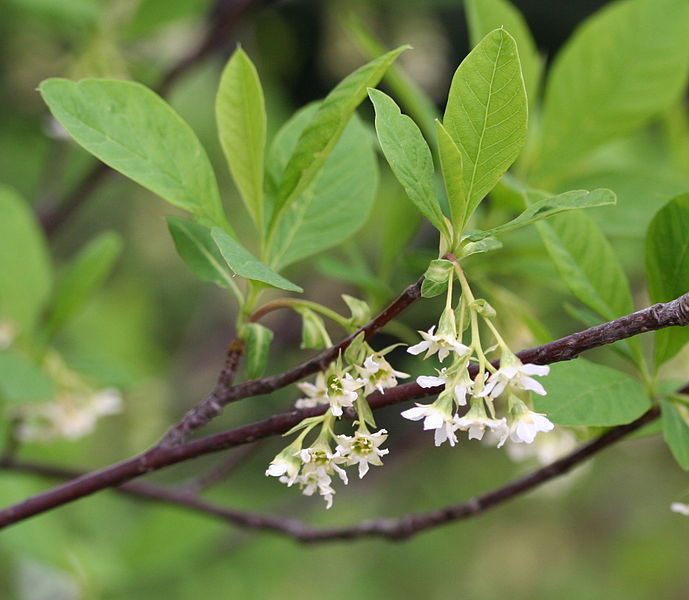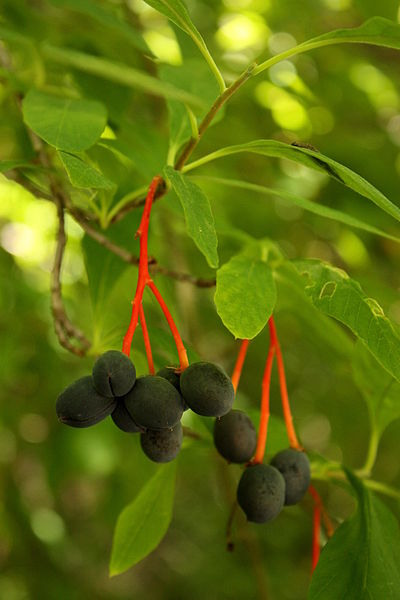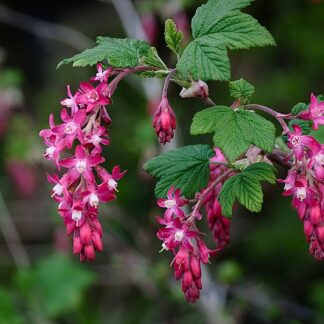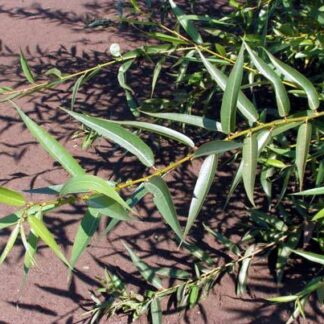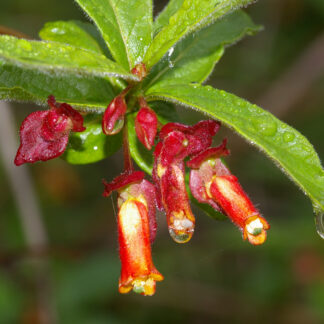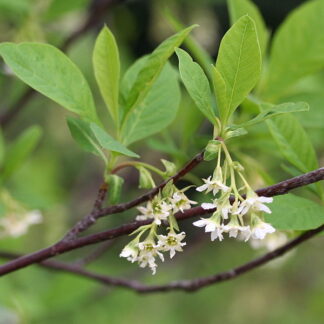Description
Sold in bundles of 10.
At a Glance: Deciduous shrub producing clusters of white flowers in very early spring. One of the earliest plants to bloom.
Height: 16.5 feet (5 meters).
Stems: Stems are red-brown with round, gray pores.
Leaves: Alternating arrangement, oblong to lanced shaped, not toothed, with prominent raised veins on underside; strong aroma when crushed; size: 5-12 cm (2-4.75 in) long, 2-4 cm across; color: pale-green.
Flowers: Male and female plants can be on same or separate plants (monoecious or dioecious). Flowers have 5 petals and 15 stamens in 3 distinct series. Flowers hang in 5-10 cm long cluster from leaf axils; primary color: white above and paler green and waxy beneath; size: 1 cm across; shape: bell-shaped.
Flowering Period: February, March, April.
Fruits: Fruits smell and look like plums and contain large pit; size: 1 cm long; color: creamy-orange turning bluish-black.
Appeal: Oso Berry, or Indian Plum, is one of the first flowering native shrubs to herald the approach of spring. Its white, fragrant, drooping flowers, appear in March, before many species leaf out. The flowers give rise to berries that ripen and turn purple in June, which provide a favorite source of food for many bird species. This plant is relatively easy to establish. It does very well along streambanks and wetland areas, as well as forested areas where there is some sunlight.
Helpful Tips: As with any new planting, it should be watered during the dry season for the first 1-2 years until it becomes established. Plant 4-6 inches apart and expect some mortality.
| Sun/Shade Tolerance | Hydrology | Elevation Range |
| Slightly tolerant of shade.
full sun > 80%
mostly sunny 60%-80%
partial sun and shade 40%- 60%
mostly shady 60%-80%
full shade > 80%
|
Tolerant of fluctuating water tables.
wet
moist
dry
|
low elevation
mid elevation
sub-alpine
high elevation
|
| Wildlife Value | |
|
Berries
Seeds
Nectar for hummingbirds
Nectar for butterflies
Host for insect larvae
Thickets and shelter
Thorny or protective cover
|
Birds: The berries are eaten by waxwings, robins, and other birds. Annas hummingbirds use the nectar in lowland areas. Mammals: Foxes, coyotes, deer and bear eat the berries. |
References:
Pojar, Jim, and Andy MacKinnon. Plants of the Pacific Northwest Coast: Washington, Oregon, British Columbia & Alaska. Revised ed. Redmond, Wash.: B.C. Ministry of Forests and Lone Pine Pub., 2004. Print.
“Sound Native Plants.” Sound Native Plants. Web. 31 Oct. 2014. www.soundnativeplants.com.

